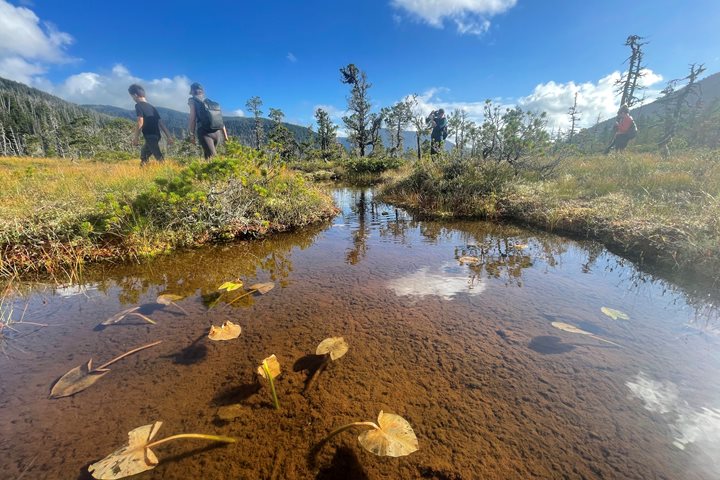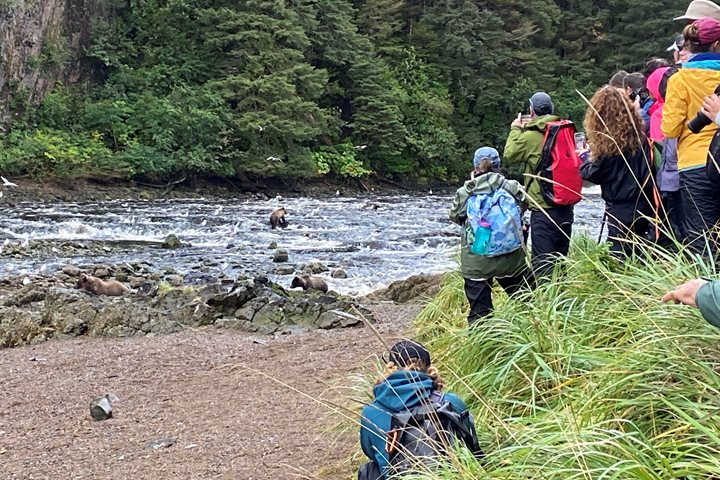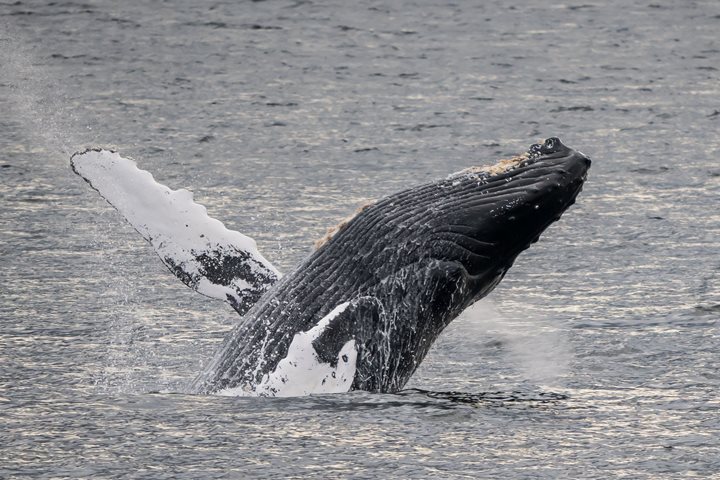It is not often that you get the chance to explore a landscape that is changing in front of your eyes. On board National Geographic Quest today, we took that rare opportunity while sailing through Glacier Bay National Park, a living laboratory of change in the wake of glacial recession. Just two hundred years ago, a 60+ mile glacier blanketed the bay in hundreds of feet of ice. In the time since, the glacier has dramatically receded, and a huge diversity of life has followed in its path. We spent the entire day searching for, and finding, that life.
We began the morning at the face of Margerie and the Grand Pacific Glaciers at the northern end of the park along the Canadian border. While silently observing the glaciers, we were lucky to see a calving event. We even spotted a group of otters hauled out on one of the icebergs at the base of the ice, a rare behavior for this marine mammal. From there, we made our way south. We sailed past a huge array of seabirds, including tufted puffins, before spotting two brown bears, one foraging in the intertidal zone and another scaling the steep rock face of Gloomy Knob. High above, near the top of the ridgeline, mountain goats rested among the young Sitka spruce and Sitka alder that have colonized the freshly exposed earth. The last wildlife hotspot of the day, South Marble Island, provided sights (and sounds) of Steller sea lions and hundreds of different nesting seabirds.
We ended our day with walks at Bartlett Cove, the entrance to the bay and the region of the park that has been uncovered from glacial ice the longest. The old growth forests we found here capped our exploration of change in the wake of glacial recession and showcased the incredible power of nature to thrive.
Photo caption and photographer: The Fairweather Mountains peek out through the clouds with Margerie Glacier in the foreground. Photo by Alex Krowiak







